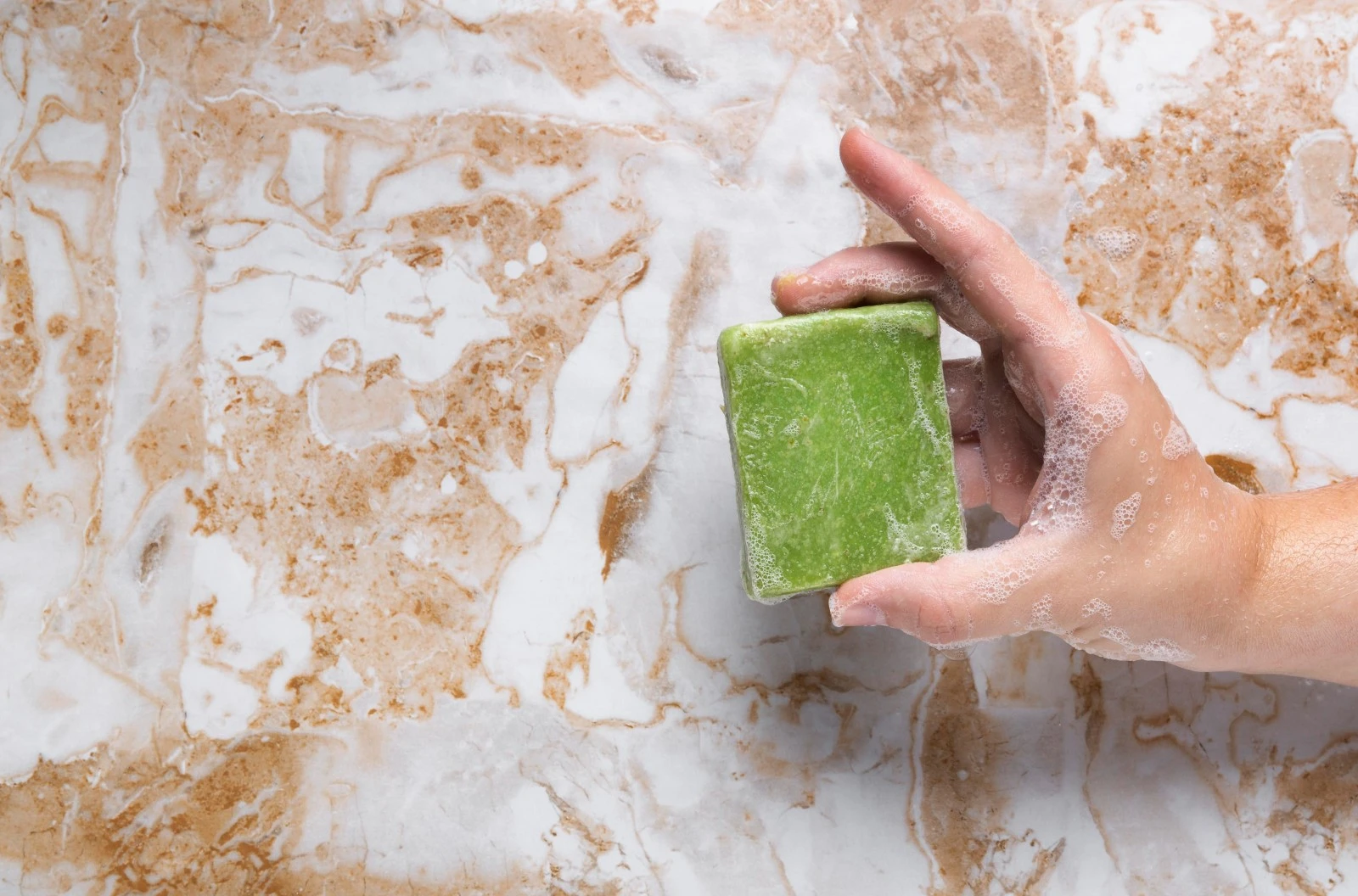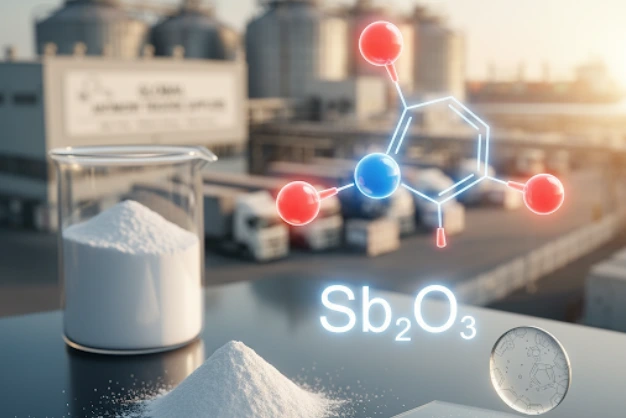Function: Acts as a chelating agent by binding metal ions such as calcium, magnesium, and iron.
Benefit: Prevents metal ions from forming insoluble salts with soap, ensuring the soap remains effective.
Outcome: Maintains soap’s lather and cleaning power by sequestering metal ions.
Issue in Hard Water: High levels of calcium and magnesium can cause soap scum formation.
Solution: Sodium Gluconate binds hard water ions, preventing soap scum.
Benefit: Enhances soap performance in hard water, ensuring better cleaning efficiency and residue-free surfaces and fabrics.
Oxidative Degradation: Metal ions can catalyze the degradation of fats and oils in soap, leading to spoilage.
Function: Sodium Gluconate inhibits the action of these metal ions.
Benefit: Prevents discoloration and rancidity, extending the soap’s shelf life.
Outcome: Ensures the soap remains effective and visually appealing over time.
Sodium Gluconate enhances soap making by
Acting as a chelating agent. Improving performance in hard water. Stabilizing formulations to prevent spoilage. Neutralizing Metal Ions: Sodium Gluconate effectively binds with metal ions such as calcium and magnesium.
Improvement: By neutralizing these ions, it prevents them from interfering with the soap’s cleaning action.
Outcome: This leads to better lather formation and enhanced cleaning efficiency, ensuring the soap performs optimally even in hard water conditions.
Prevention of Discoloration: Sodium Gluconate helps in preventing the discoloration of soap caused by metal ion reactions.
Maintaining Appearance: It stabilizes the formulation, ensuring the soap retains its color and clarity over time.
Outcome: This maintains the soap’s aesthetic appeal, making it more attractive to consumers and ensuring long-term product quality.
Biodegradability: Sodium Gluconate is readily biodegradable, breaking down naturally without harming the environment.
Non-Toxic Nature: It is non-toxic, ensuring that it does not pose any health risks to users.
Gentle on Skin: Its gentle formulation makes it suitable for use in soaps designed for sensitive skin.
Sodium Gluconate in soap offers several key benefits
Enhanced Cleaning Efficiency: Neutralizes metal ions to improve cleaning performance.
Improved Aesthetic Quality: Prevents discoloration, maintaining the soap’s appearance.
Environmental and Skin Safety: Biodegradable and non-toxic, making it safe for the environment and gentle on skin.
These benefits make Sodium Gluconate an ideal ingredient for modern soap formulations, ensuring high performance, safety, and consumer appeal.
Sodium Gluconate: Used for its effective chelation, biodegradability, and non-toxic properties.
EDTA (Ethylenediaminetetraacetic Acid): Known for its strong chelation ability and wide pH range stability.
Citric Acid: A natural chelating agent that is also biodegradable and commonly used in eco-friendly products.
Sodium Gluconate: Binds effectively with metal ions like calcium and magnesium, enhancing soap performance in hard water. It maintains the soap’s cleaning power by preventing metal ion interference.
EDTA: Offers superior chelation strength, binding with a wide range of metal ions. It remains stable across various pH levels, making it highly effective in different conditions.
Sodium Gluconate: Biodegradable and non-toxic, posing minimal environmental risks. It breaks down naturally without accumulating in ecosystems.
EDTA: Not readily biodegradable and can persist in the environment. It may accumulate in water bodies and potentially disrupt aquatic life, leading to ecological concerns.
Citric Acid: Highly biodegradable and eco-friendly. It decomposes quickly in the environment, making it an excellent choice for green formulations.
Sodium Gluconate: Effective chelation, environmentally friendly, and non-toxic. Ideal for high-performance soaps that are also safe for the environment.
EDTA: Strong chelation and versatile, but with significant environmental persistence. Best for applications requiring robust performance, where ecological impact can be managed.
Citric Acid: Good for mild chelation needs, highly biodegradable, and eco-friendly. Suitable for natural and green soap formulations.
Understanding the strengths and environmental impacts of these chelating agents helps in choosing the right ingredient for specific soap formulations, balancing performance with sustainability.
Integration: Sodium Gluconate can be easily incorporated into soap recipes during the mixing phase. It should be added to the water phase before combining with oils and lye.
Mixing: Ensure it is fully dissolved in the water to avoid any granules that could affect the soap’s texture.
General Use: For effective chelation, a typical usage level is between 0.1% to 0.5% of the total soap weight.
Hard Water Areas: In regions with very hard water, the dosage can be increased up to 1% to ensure optimal performance.
Formulation Specifics: Always test in small batches first to determine the best dosage for your specific formulation needs, as factors like water hardness and soap type can influence the ideal amount.
Homemade Soap Recipes: Sodium Gluconate is also popular among home soap makers who seek to improve their soap’s performance and longevity. It’s a favorite ingredient in DIY recipes found in soap-making communities and forums.
Using Sodium Gluconate in soap formulations involves
Incorporation Tips: Add during the water phase and ensure complete dissolution.
Dosage Guidelines: Typically 0.1% to 0.5%, with up to 1% for hard water.
Commercial Use: Featured in eco-friendly and high-performance soaps.
These practical guidelines help soap makers achieve optimal results, enhancing cleaning efficiency and product stability.
Sodium Gluconate in soap making offers several key advantages
Enhanced Cleaning Efficiency: By neutralizing metal ions, it ensures better lather formation and effective cleaning, even in hard water conditions.
Improved Aesthetic Quality: It prevents discoloration and rancidity, maintaining the soap’s visual appeal and extending its shelf life.
Environmental and Skin Safety: Sodium Gluconate is biodegradable and non-toxic, making it safe for the environment and gentle on the skin.
Incorporating Sodium Gluconate in soap formulations is a smart choice for soap makers looking to enhance product performance and sustainability. Its effectiveness in improving cleaning efficiency, stabilizing formulations, and ensuring environmental safety makes it an ideal ingredient. Consider using Sodium Gluconate in your soap recipes to create high-quality, eco-friendly products that meet consumer demands for performance and sustainability.





